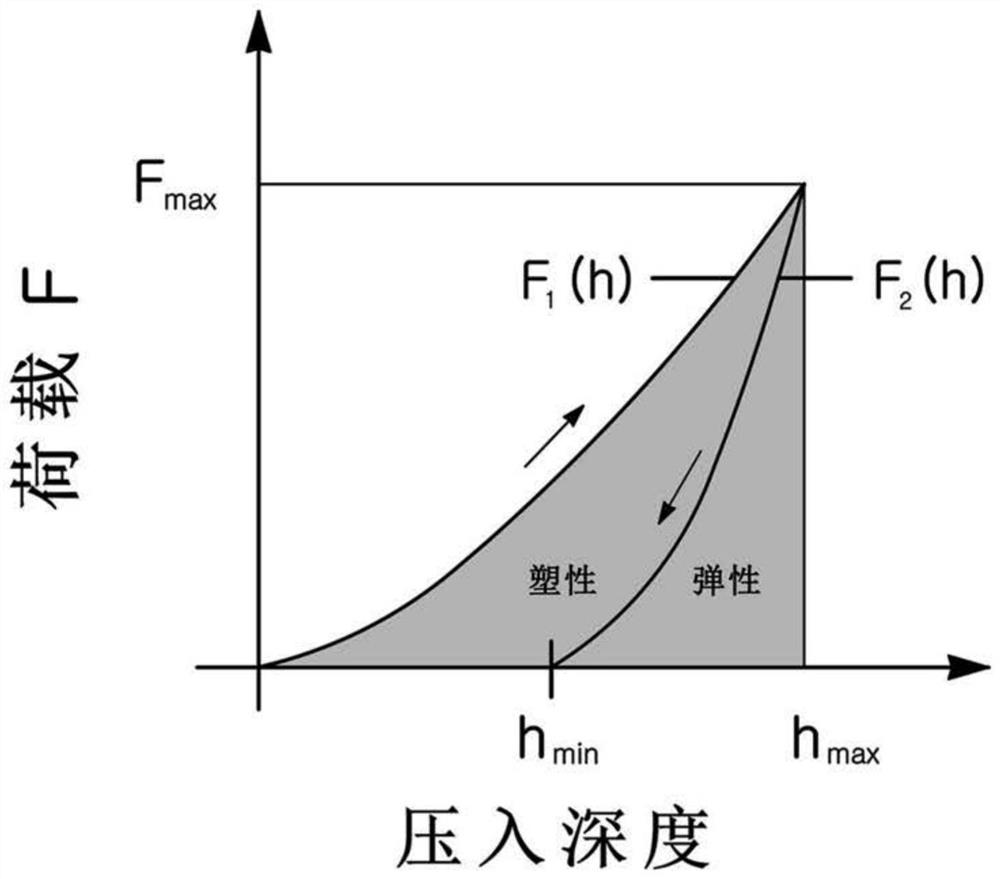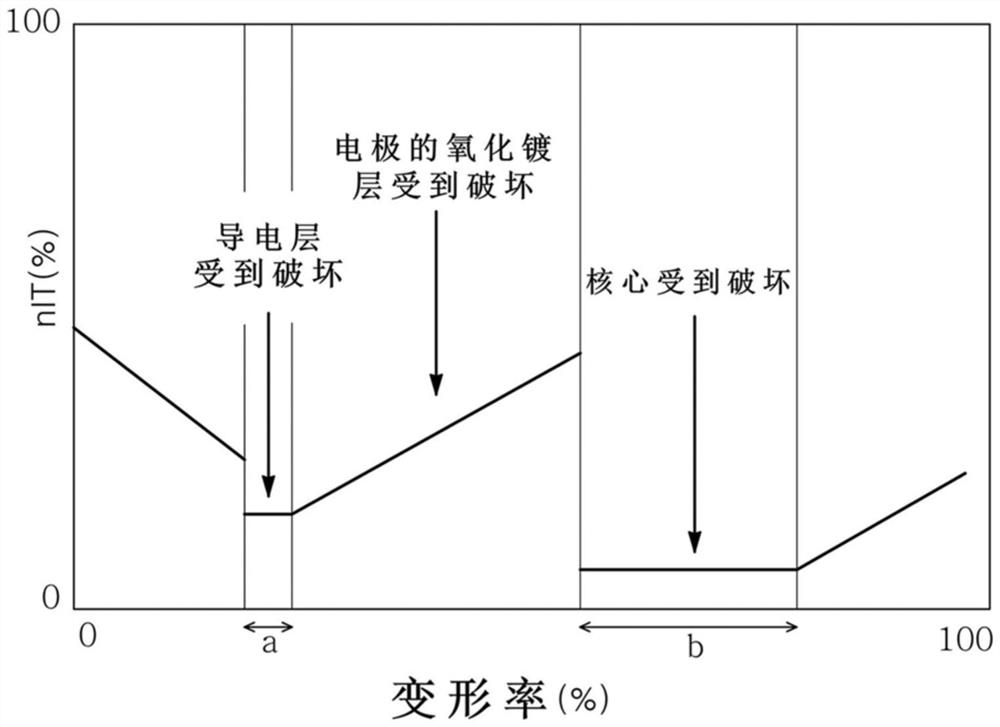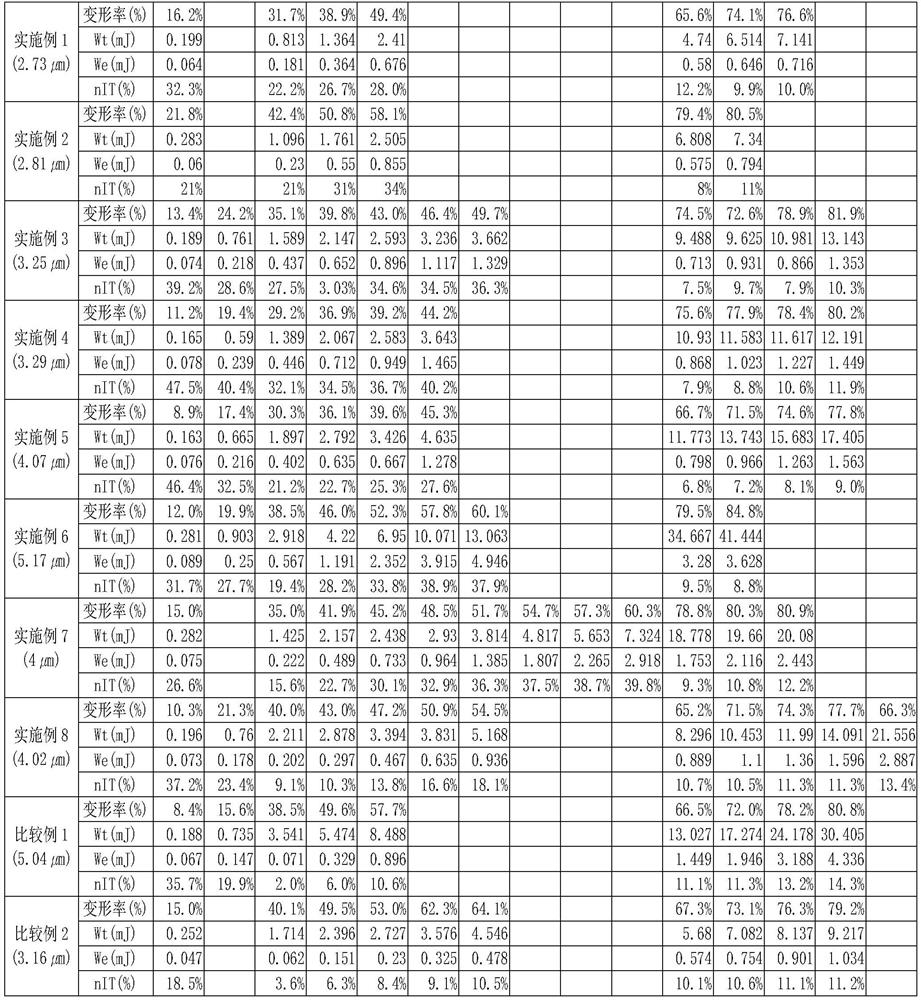Conductive particles, conductive materials, and contact structures
A technology of conductive particles and conductive layers, applied in the field of conductive materials, contact structures, and conductive particles, can solve the problems of reducing reliability resistance, reducing contact resistance, and difficult to achieve anisotropic conductive material joint resistance, etc., to reduce the initial Resistance, low initial resistance, and improved contact reliability
- Summary
- Abstract
- Description
- Claims
- Application Information
AI Technical Summary
Problems solved by technology
Method used
Image
Examples
Embodiment 1
[0089] 1) Synthesis of insulator core
[0090] In a 3L glass beaker, 750g of monomer trimethylolpropane ethoxylate triacrylate (TMPETA, Trimethylolpropane ethoxylate triacrylate), 40g of 1,6-hexanediol ethoxylate diacrylate (HDEDA, 1,6- Hexanediol ethoxylate diacrylate) and 750g of divinylbenzene (DVB, Divinylbenzene) and 5g of benzoyl peroxide (BPO) were added and then processed in a 40kHz ultrasonic cleaner (bath) for 10 minutes to prepare the first solution.
[0091] Dissolve 500 g of dispersion stabilizer polyvinylpyrrolidone (PVP, Polyvinylpyrrolidone)-30K and surfactant dioctylsulfosuccinate sodium salt (Solusol, Dioctylsulfosuccinate sodium salt) to 4,000 g in a 5 L polypropylene (PP) beaker deionized water to prepare the second solution.
[0092] After putting the above-mentioned first solution and second solution into a 50L reactor and adding 41,000g of deionized water, they were treated with an ultrasonic homogenizer (Homogeniser, 20kHz, 600W) for 90 minutes, and...
Embodiment 2
[0108] In Example 1 above, 1500 g of 1,6-hexanediol ethoxylate diacrylate (HDEDA) was used to synthesize the insulator core. Using 24 g of the above-fabricated insulator core, the remaining process was performed in the same manner as in Example 1. The average diameter of the insulator core produced above was 2.53 μm. The protrusion size of the above-produced conductive particles was 86 nm.
Embodiment 3
[0110] In Example 1 above, 800 g of trimethylol propane ethoxylate triacrylate (TMPETA), 50 g of 1,6-hexanediol ethoxylate diacrylate (HDEDA) and 800 g of divinylbenzene (DVB) were used Synthesize an insulator core. Using 40 g of the above-produced insulator core, the remaining processes were performed in the same manner as in Example 1. The average diameter of the insulator core produced above was 3.04 μm. The protrusion size of the above-produced conductive particles was 135 nm.
PUM
| Property | Measurement | Unit |
|---|---|---|
| thickness | aaaaa | aaaaa |
| diameter | aaaaa | aaaaa |
| diameter | aaaaa | aaaaa |
Abstract
Description
Claims
Application Information
 Login to View More
Login to View More - R&D
- Intellectual Property
- Life Sciences
- Materials
- Tech Scout
- Unparalleled Data Quality
- Higher Quality Content
- 60% Fewer Hallucinations
Browse by: Latest US Patents, China's latest patents, Technical Efficacy Thesaurus, Application Domain, Technology Topic, Popular Technical Reports.
© 2025 PatSnap. All rights reserved.Legal|Privacy policy|Modern Slavery Act Transparency Statement|Sitemap|About US| Contact US: help@patsnap.com



